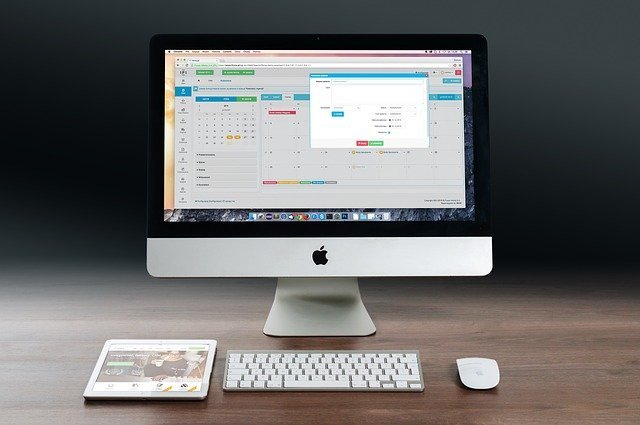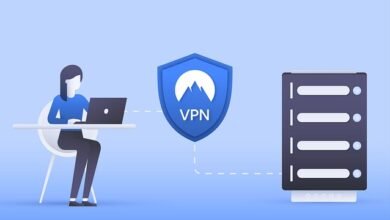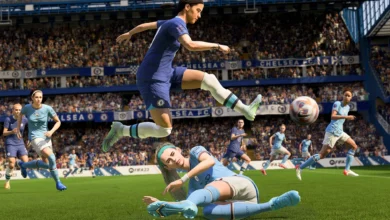What is an operating system – what is an operating system (OS)

What is an operating system – what is an operating system (OS)
An operating system (OS) is software that acts as an interface between a computer’s hardware components and a user. In fact, you can call it a means by which different parts of the user and the computer can interact with each other.
An operating system is also called system software. Most people also call it “OS” by the acronym. Also called the heart of a computer, an operating system is a system software that acts as an interface between the user and computers.
Let me explain this sentence directly, when you turn on the computer, this operating system is the only one that gives you the means to use the computer. Just like you are listening to a song by clicking on the .mp3 file, double clicking on a Word document, opening three or four windows, typing something on the keyboard, saving some file on the computer, etc. So you can’t do all this without the operating system.
What is meant by operating system?
An operating system is a program with which you can operate your computer. So, when you buy a new PC, you first get Windows 8 or Windows 10 preloaded with it from the store owner. Then you take your computer or laptop home. Otherwise, without an operating system, you can’t even turn on your computer.
It is also a question why it is called system software. If you want to run user program means applications program in computer, it can never run without operating system.
This operating system helps in using computers well. The operating system basically does the same thing like taking some input from the keyboard, processing instructions, and sending the output to a computer screen.
You only see this operating system when you turn on your computer and when you turn it off. You live inside a computer like Game, MS word, Adobe Reader, VLC media player, Photoshop and many other programs, to run them we need a large program or software that we call the operating system.
The name of the operating system used in the mobile phone is Android, which everyone knows. You must know what an operating system is , so let’s get to know some of its functions.
Examples of operating systems
Different operating systems are used for different tasks. Here I have shared the OS menu, which most people like to use.
- Microsoft Windows
- Google’s Android operating system
- Apple iOS
- Apple Mac
- Linux operating system
All of these examples are for very large operating systems. Although there is not much difference in them, most people know them by these names.
Operating System Functions
Although the computer does a lot of work, but first of all when you turn on the computer, the operating system is first loaded into the main memory means RAM and after that, the user program needs the hardware from which to allocate. Below are the various functions of the operating system, learn more about them in detail.
1. Memory management
Memory management means primary and secondary memory management. Main memory means that RAM is a very large collection of bytes.
Meaning there are many small slots in memory where we can keep some data. Where there is an address for each branch. Main memory is the fastest memory that CPU Direct uses. Because all the programs that the CPU runs in are only in main memory.
The operating system does all of these things.
- What part of main memory will be used, which will not, how much will there be, and how much will not be.
- In multiprocessing, the operating system decides which process to give memory and to whom it will be given.
- When a process requests memory, it gives it to the memory operating system (process means a task or a small task that takes place inside the computer).
- When the process finishes its work, the operating system restores its memory.
2. Processor management (process scheduling)
When it comes to a multiprogramming environment, the operating system decides which process will get which processor, who will not, and for how long.
This process is called process scheduling. The operating system makes all this work.
- The operating system also sees that the processor is empty or doing some work, or that it is free and the process has finished its work or not. If you wish, you can see in the Task Manager how many tasks are running and how many are not. The software that does all this work, it’s called Traffic Controller.
- Process CPU specialization.
- When one process finishes working, it engages the processor in another work and frees the processor when nothing is working.
3. Device management
Drivers are used in your computer, you should know that like Sound Driver , Bluetooth Driver, Graphics Driver, WiFi Driver but they help to run different I/O device, but these drivers operating systems.
So let’s see what this operating system does as well.
- It keeps track of all computers and the name of the program that accomplishes this task is I/O Controller.
- Just like the different processes that need hardware to perform some task, the operating system also does the custom hardware job. Let’s take an example, if a process has to do some task like video playback, not print output, then these two tasks will be done with the help of output device screen, printer. So when both devices have to be given the OS process, it does the work.
- When the process work is finished, the device is reallocated again.
4. File Management
Lots of directories are organized into one file. Because with this we can easily find the data. So let’s find out what the operating system does in the file manager.
- Keeps information, location, and status organized. All this sees the file system.
- Who will get which resource?
- Resource reallocation must be done.
5. Security
When you turn on your computer, it asks you for this password, this means that the operating system is preventing your system from unauthorized access. This keeps your computer safe. And you cannot open some programs without a password.
6. View system performance
Sees computer performance and optimizes the system. The operating system keeps records of how long it takes to provide a service.
7. Report an error
If a lot of errors appear in the system, the operating system detects them and restores them.
8. Create synergy between the program and the user
- Assigns the task to the compiler, interpreter, and compiler. To connect different software to the user, so that the user makes good use of the software.
- Provides communication between the user and the system.
- The operating system is stored in the BIOS. Everything else makes the app easy to use.
Operating System Features
Now let’s know what are the features of the operating system:-
By now you should all know what an operating system does ( the function of an operating system ), so now tell us how many types of operating systems there are.
Types of operating systems – Types of operating systems OS
Technology changes day by day and everything changes with it, so the use of operating system is increasing in every field like railways, research, satellite, industry, so find out how many types of operating systems there are.
- batch operating system
- Simple batch operating system
- Multiprogramming batch operating system
- network operating system
- multiprocessor operating system
- distributed operating system
- time sharing operating system
- Real time operating system
1. Batch processing operating system
Only batch processing operating systems were brought in to overcome the problems of earlier times. If we talk about the previous systems, it was more time-consuming to set up.
At the same time, this significant setup time has been reduced in these batch processing systems as jobs are processed in batches. At the same time, this type of operating system is called batch processing operating system in Hindi.
In this, any similar tasks are sent to the CPU for processing and run simultaneously.
The main function of a batch processing system is to automatically perform tasks in one go. The most important thing that does this work is the “Batch Monitor” which is located at the low end of main memory.
i) Simple batch system
This is the oldest system in which there is no direct interaction between the user and the computer. In this system, the user had to bring the task or job to a storage unit for processing and presenting it to the computer operator.
In this, all the functions were given to the computer in one go or a line. In a few days or in a few months this task was addressed and the output device had an output store. This system is used to process tasks in batch, hence its name also called batch mode operating system.
b) Multiple programming batch systems
In this operating system, a task was captured from memory and executed. The operating system that keeps processing the task, if the job needs I/O at the same time, the operating system gives the second task to the CPU and I/O to the first, that’s why the CPU is always busy.
The number of jobs in memory is always less than the number of jobs in disk. If too many jobs remain in the line, the operating system will decide which function to process first. In this operating system, the CPU does not remain idle.
The timeshare system is also part of the multiprogramming system. The response time is less in the time-sharing system but the CPU usage is more in the multiprogramming.
Negatives
2. Network operating system
Its abbreviation is NOS, and the full form of NOS is ” Network Operating System “. This network operating system provides its services to computers connected to a network.
If they are given examples, they include access to shared files, shared applications, and printing capabilities.
NOS is a type of software that allows several computers to communicate simultaneously, share files and also with other devices.
Previous Microsoft Windows and Apple operating systems were not designed for single computer use and network use. But as computer networks grow slowly and their use increases as well, and these operating systems start to evolve as well.
There are two basic types of NOS (Network Operating System): –
Peer-to-Peer Operating System (P2P), which is installed in every computer. On the other hand, there is the client-server model, where one machine has a server and the other has client software installed.
Types of network operating systems
When talking about the types of network operating systems, they mainly consist of two basic types, peer-to-peer NOS and client/server NOS:
1. Peer-to-peer network operating systems allow users to share network resources that are saved in an easily accessible common network location. In this architecture, all devices are treated equally according to the function.
Peer-to-peer works best on small to medium LANs, plus it’s very cheap to set up.
2. Client/server network operating systems provide users with access to all resources through the server. In its architecture, all functions and applications are unified under a single file server that can be used by individual client actions to execute them, even in any physical location.
The client/server is difficult to install, while requiring a significant amount of technical maintenance. Moreover, it also costs more.
Its biggest advantage is that the network is centrally controlled, so any changes can be made easily, while additional technology can also be integrated.
3. Multiprocessor system
In a multiprocessor system, many processors use shared physical memory. Computing power is very fast. All these processors run under one operating system. Here are some of its advantages below
Advantages
4. Distributed operating system
The sole purpose of using a distributed operating system is that the world has a powerful operating system and microprocessors have become very cheap, and communication technology has improved a lot.
As a result of this progress, the distributed operating system has now been created , which is very cheap and keeps remote computers blocked over the network. That in itself is a great achievement.
Advantages
5. Time sharing operating system
In this, the operating system gives some time to complete each task correctly, so that each task can be completed correctly. At the same time, each user uses one system in which time is given to the CPU. This type of system is also called multitasking system.
At the same time, whatever task is performed in it, it can be done by one user or it can be done by multiple users.
The amount of time it takes to complete each task is called the quantum. At the same time, only after completing each task, the operating system starts the next task again.
Advantages
Let’s learn about the advantages of a time-sharing operating system.
Negatives
Let us know about the disadvantages of time sharing operating system.
Examples of a time-sharing operating system: Unix
6. Real-time operation system
This is the most advanced operating system, which does real-time processing, meaning during missile departure, rail ticket reservations, and satellites, if everything is delayed even for a second, this operating system will not remain idle at all.
These are of two types,
1. Hard real-time operating system
This is the operating system, in the meantime the time is given to complete the task, and the work is completed during that time.
2. Real-time soft
In Soft Real-Time punctuality was slightly lower, what happens if a task is running and another task arrives at the same time, then the new task is given first priority. This was some information about the types of operating systems in Hindi. Before that you knew what operating system is in Hindi .
What is the client operating system?
A computer desktop is a stand-alone computer processing unit. It is designed to perform automation tasks for people. A desktop computer is very unique in that it does not require any networking or external components to operate.
This client operating system is mostly used in desktop computers or mobile devices. This operating system usually differs from central servers in that it supports only one user.
Smartphones and mini computers use the client operating system. This operating system manages hardware components, which include printers, monitors, and cameras . Usually every computer has a specific operating system.
These client operating systems provide multiple processing power at the lowest possible cost. Client operating systems include Windows®, Linux®, Mac® and Android®.
Each operating system is designed to perform some specific function on specific hardware. This hardware compatibility is the primary consideration upon which the operating system of client computers is determined.
For example, in recent times Windows ® is very popularly used as client operating systems.
Which program is an operating system?
An operating system is a system program.
What is another name for the operating system?
OS is another name for an operating system.
What is an example of a portable operating system?
Android و iOS و Windows Mobile Symbian.
What did you learn today?
So today’s friends information is very important. So it is more important for a particular student. Now if this question came in the test, what is an operating system and the functions of an operating system, then you can answer it easily.
By the way, in my opinion, the operating system introduces new features very quickly, such as talking about Windows 10 itself.
Because it was initially said that the operating system is the heart of the computer. If you want to ask any question then definitely write in the comment box below and if you want to make any suggestion then definitely give it. If you haven’t subscribed to our blog yet, definitely subscribe.



